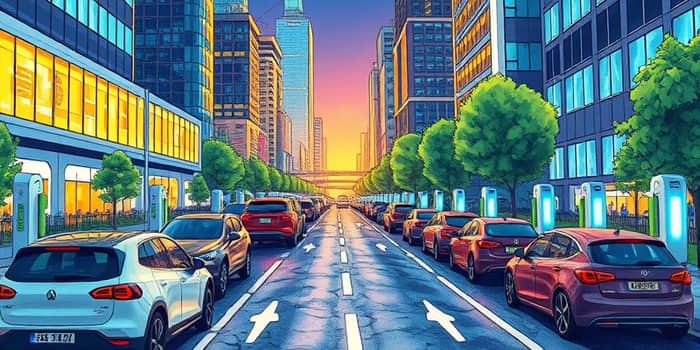
In 2025, the global automotive industry is experiencing a remarkable resurgence, fueled by the unstoppable rise of electric vehicles (EVs). What began as a niche market has rapidly transformed into a mainstream powerhouse, reshaping consumer expectations and industrial strategies.
Against a backdrop of post-pandemic recovery, manufacturers, policymakers, and consumers are aligning around a shared vision: transition to sustainable mobility. This shift is not merely a trend—it represents a fundamental reimagining of transportation.
The statistics speak volumes: over 20 million EVs are projected to hit the roads in 2025, accounting for more than a quarter of all new vehicle sales worldwide. In Q1 alone, sales topped 4 million units—a dramatic 35% year-over-year growth that signals accelerating adoption.
These numbers underscore the profound impact of supportive policies, cutting-edge battery advancements, and rapid expansion of charging infrastructure on consumer confidence.
China remains the indisputable frontrunner. In 2024, nearly half of all new cars sold in China were electric, representing two-thirds of global EV purchases. Government incentives, mass production efficiencies, and a nationwide charging network have cemented its position.
In North America, EVs captured 7.5% of new vehicle sales in Q1 2025, with nearly 300,000 units delivered. Though growth remains positive, policy uncertainty and market adjustments have introduced some volatility, especially in the U.S. auto market.
Europe continues to build on its strong foundation, with several countries targeting 100% zero-emission vehicle sales by 2035. Meanwhile, emerging markets in Africa, Southeast Asia, and Latin America are poised for gradual uptake, challenged by infrastructure gaps and affordability concerns.
Automakers are racing to capture market share by unveiling a spectrum of electric models. From city compacts and luxury sedans to high-performance SUVs, brands are diversifying their portfolios to appeal to varied consumer segments.
Behind the scenes, abundant supply chains and networks are being optimized to support mass EV production. Strategic partnerships with battery suppliers and software firms are enabling faster rollout of next-generation vehicles.
While new EV sales continue to climb, the used EV market is experiencing even faster growth. In May 2025, U.S. used EV sales jumped 32% year-over-year, driven by affordability and improved consumer confidence in pre-owned models.
Shoppers are increasingly enticed by lower price points and reduced depreciation. Tesla dominates this segment with nearly half of the market share, but competition is intensifying as more affordable options emerge from established and new brands alike.
Consumers are also influenced by total cost of ownership calculations, which factor in lower fuel and maintenance expenses. ambitious sustainability targets set by corporations and municipalities further bolster demand.
Governments worldwide recognize the environmental and economic benefits of electrification. Incentives such as tax credits, rebates, and non-monetary perks (e.g., access to carpool lanes) have been pivotal in early adoption phases.
However, policy shifts and uncertain long-term incentives—particularly in the U.S. and parts of Europe—pose challenges. Automakers and buyers alike are watching legislative developments closely, knowing that regional policy disparities can quickly alter market dynamics.
Despite the optimism, the road ahead is not without obstacles. Pricing pressures are mounting as competition intensifies and subsidies fluctuate. Supply chain disruptions, though less severe than earlier in the decade, still require proactive risk management.
Yet, the overarching narrative remains positive. Analysts forecast that by 2035, electric vehicles could represent up to 75% of global new-car sales. Achieving this milestone will depend on continuous technological innovation, stable policy frameworks, and expanded charging networks.
Ultimately, the EV revolution illustrates a broader industrial transformation—one that prioritizes environmental stewardship, technological progress, and consumer empowerment.
For stakeholders across the value chain, from OEMs to charging station operators, the message is clear: adapt swiftly, invest strategically, and embrace the electrified future. The automotive sector’s rebound is not just about selling cars—it’s about driving forward a new era of mobility.
References













